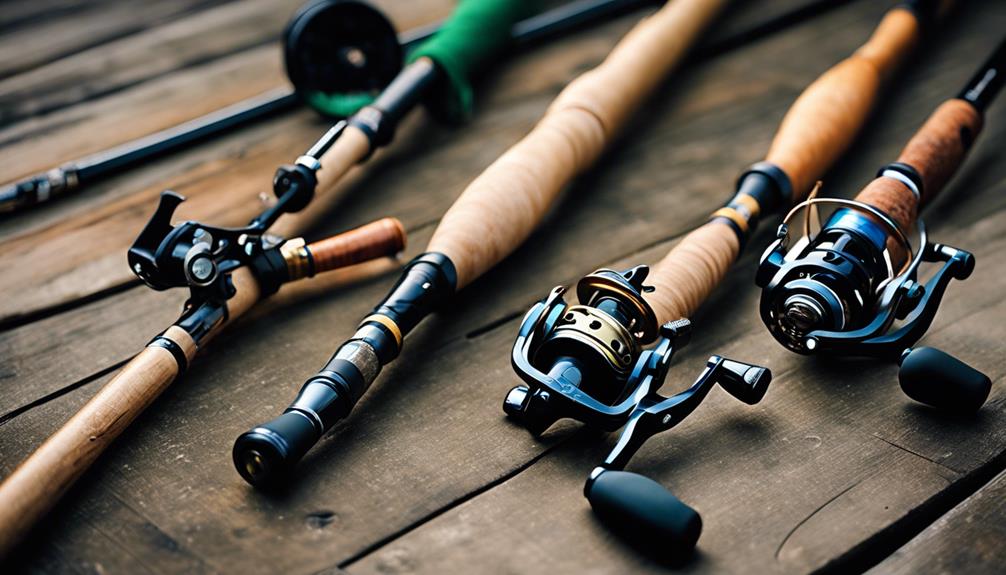Understanding the Basics of Fly Fishing
Fly fishing is a unique and rewarding way to catch fish, distinguished by its use of artificial flies as bait. Unlike traditional fishing techniques where heavier lures are employed, fly fishing relies on the skillful casting of lightweight flies that float on the water’s surface. This method not only targets specific fish species but also enhances the overall fishing experience. To maximize your enjoyment and success, it’s essential to equip yourself with the right fishing gear for fly fishing. Understanding the components of this specialized gear can significantly improve your skills and increase your catch rates.
The Essential Fly Rods: Choosing the Right One
When it comes to fishing gear for fly fishing, the fly rod is arguably the most critical component. Fly rods come in various lengths, weights, and actions, each designed for specific fishing conditions and target species. For instance, lighter rods (2-6 weight) are ideal for trout and panfish in smaller streams, whereas heavier rods (7-12 weight) are suited for larger fish like salmon or saltwater species. When selecting your fly rod, consider the type of water you’ll be fishing in and the size of the fish you hope to catch. A good fly rod balances sensitivity and strength, ensuring you can detect bites while also being robust enough to handle larger fish.
The Importance of Fly Reels: Functionality and Features
The fly reel is another essential piece of fishing gear for fly fishing that often gets overlooked. Unlike conventional reels, fly reels are designed to hold line and provide drag for the fish you catch. When selecting a fly reel, look for features like smooth drag systems, adequate line capacity, and a lightweight design. The reel should match the weight of your fly rod to ensure optimal balance and performance. Additionally, consider whether you prefer a single-action or multipliers reel, as each offers different advantages in terms of line retrieval and handling. A quality fly reel can make a significant difference when battling a strong fish.
Fly Lines: Types and How to Choose
The fly line is a crucial component of your fishing gear for fly fishing. It is responsible for casting the fly and plays a significant role in determining how your fly behaves in the water. Fly lines come in various types, including floating, sinking, and intermediate lines, each serving different purposes. Floating lines are ideal for surface fishing, while sinking lines help you reach deeper waters. Additionally, consider the line weight, which should correspond to your fly rod’s weight for optimal performance. Understanding the different types of fly lines and their applications will significantly enhance your fly fishing experience.
Selecting the Right Flies: Patterns and Techniques
Flies are the heart of fly fishing, and choosing the right patterns is essential for success. There are two main categories of flies: dry flies and wet flies. Dry flies float on the water’s surface, mimicking insects, while wet flies sink below the surface, imitating nymphs or other aquatic creatures. When selecting flies, consider the local fish species, the time of year, and the specific body of water you’re fishing. Additionally, learning how to tie your own flies can be a rewarding skill that allows you to customize patterns to match local hatches. Investing in a variety of flies will ensure you’re prepared for any fishing situation.
Accessories That Enhance Your Fly Fishing Experience
In addition to the primary fishing gear for fly fishing, several accessories can enhance your overall experience. A quality fly fishing vest or pack will keep your gear organized and easily accessible. Polarized sunglasses are essential for spotting fish and reducing glare on the water. Additionally, a good net is crucial for safely landing and releasing fish without causing harm. Don’t forget about tools such as forceps, nippers, and a fly box to keep your flies organized. These accessories not only make your time on the water more enjoyable but also improve your efficiency and success rate.
Maintenance Tips for Your Fly Fishing Gear
Proper maintenance of your fishing gear for fly fishing is vital for longevity and performance. After each fishing trip, rinse your fly rod, reel, and lines with fresh water to remove salt, dirt, and debris. Inspect your gear for any signs of wear or damage, especially the fly line and leader. Store your fly rod in a protective case to prevent damage during transport. Regularly check your flies for rust or deterioration and replace them as needed. By taking care of your gear, you ensure that it remains reliable for years to come, allowing you to focus on enjoying your fly fishing adventures.
Conclusion: Elevate Your Fly Fishing with the Right Gear
Investing in the right fishing gear for fly fishing can dramatically enhance your experience on the water. From selecting the perfect fly rod and reel to understanding the nuances of fly lines and patterns, each component plays a vital role in your success. Additionally, accompanying accessories and proper maintenance will ensure your gear remains in top condition. Whether you’re a novice or an experienced angler, understanding and investing in the best gear will elevate your fly fishing experience, making it both enjoyable and fruitful. So gear up, get out there, and enjoy the art of fly fishing to its fullest!
